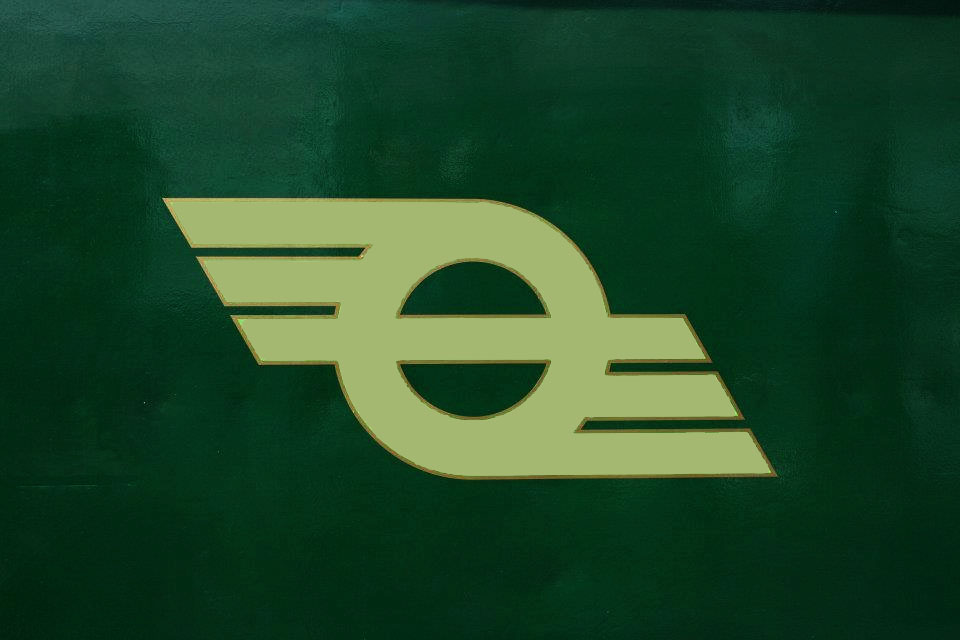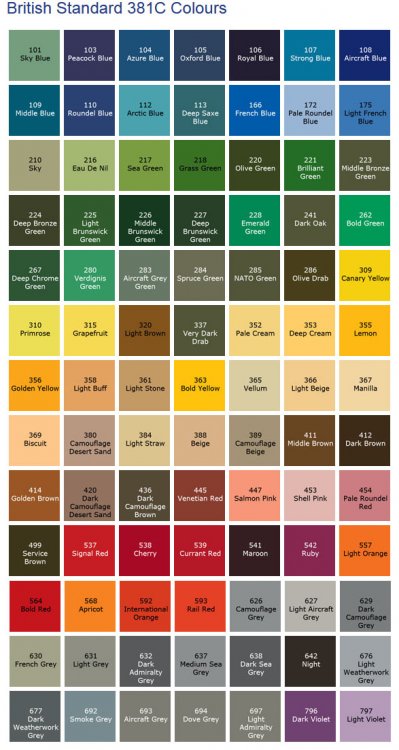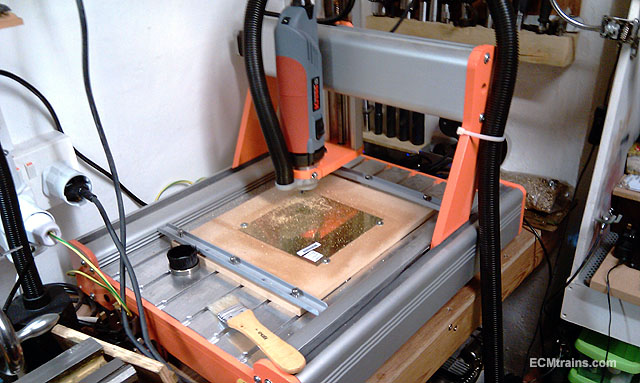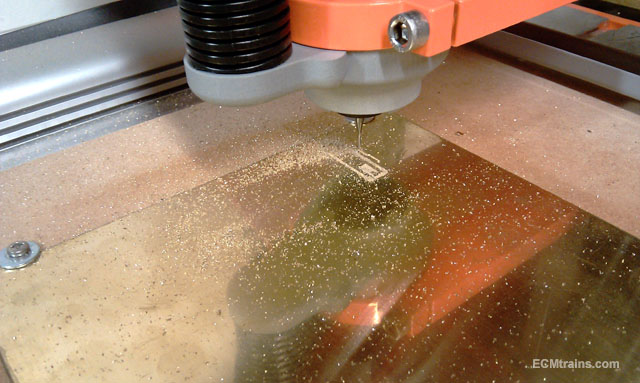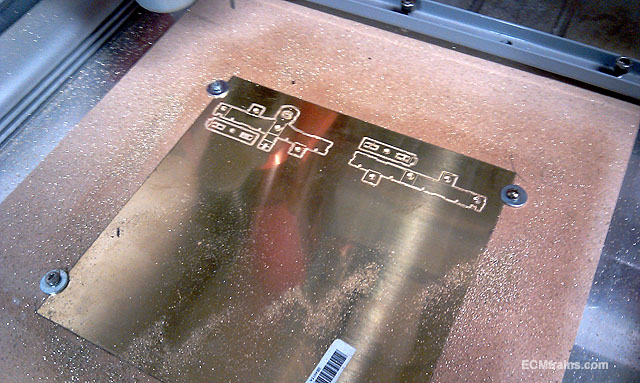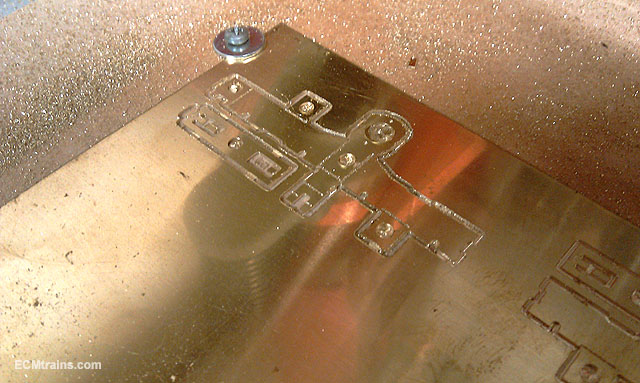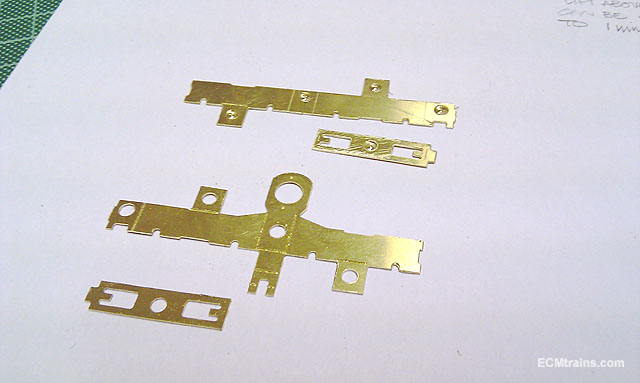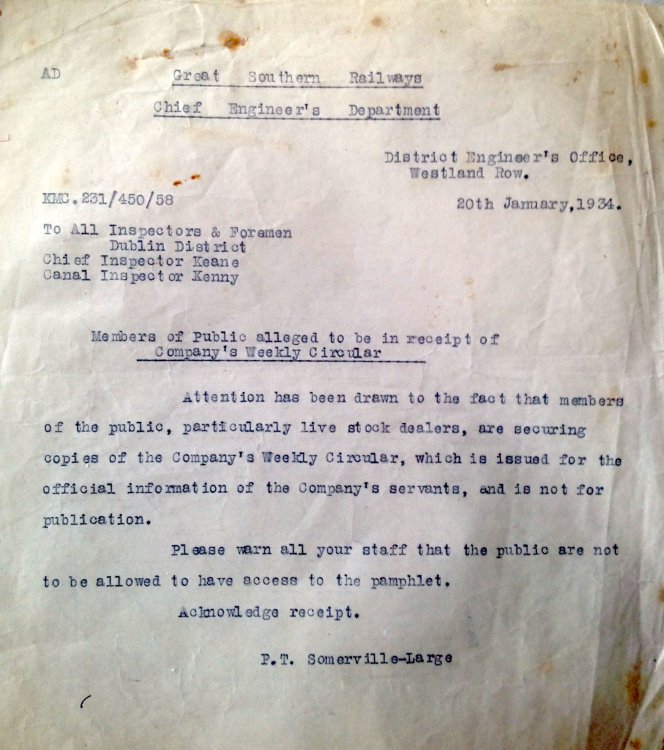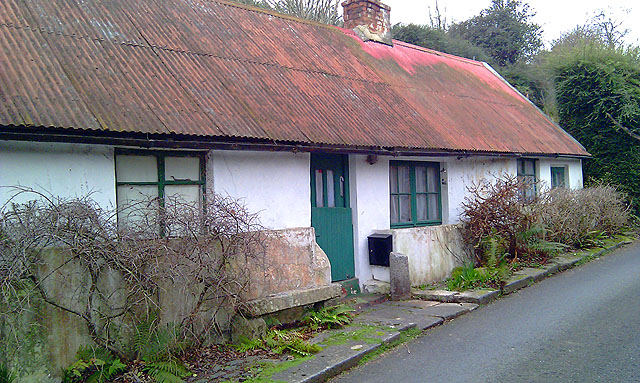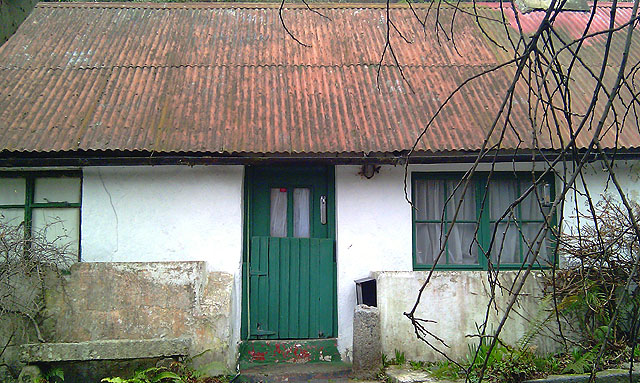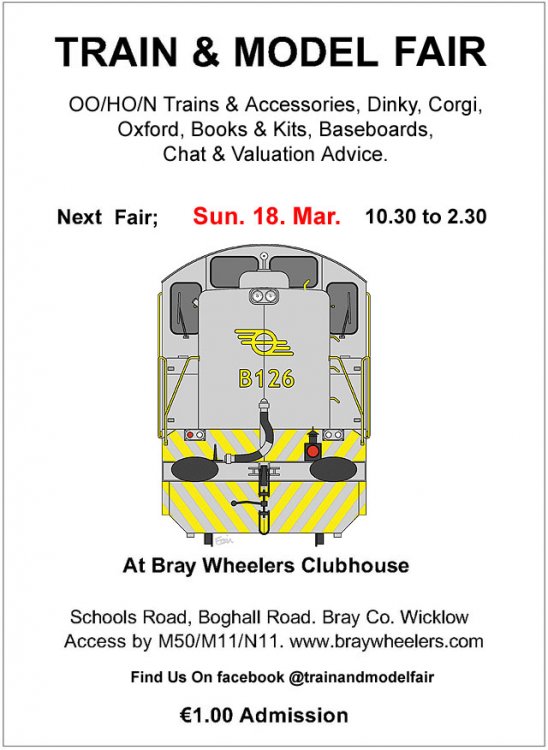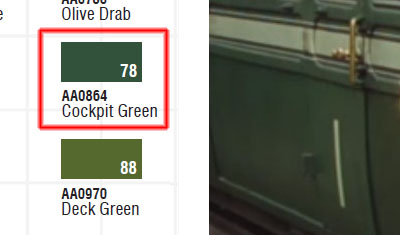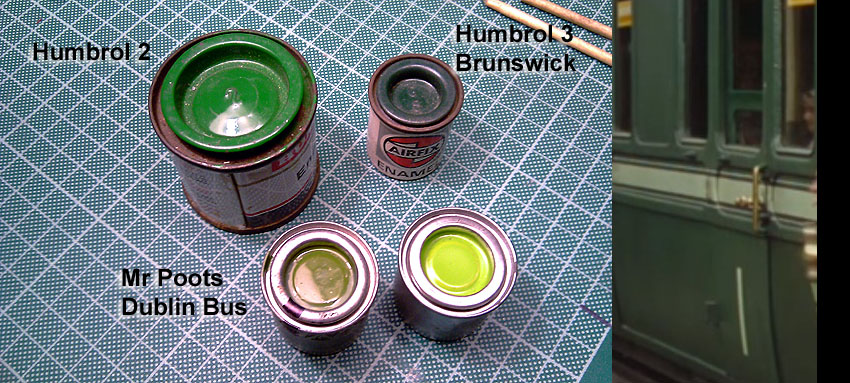-
Posts
2,726 -
Joined
-
Last visited
-
Days Won
70
Content Type
Profiles
Forums
Events
Gallery
Blogs
Store
Community Map
Everything posted by murrayec
-
Borrowed from JHB's post and adjusted to colour balance the dark green as there is a lot of reflection going on, then pasted in 216 with the gold line left intact;- Eoin
- 96 replies
-
- 1
-

-
Hi Guys Standardisation is the key, the photos are all different depending on the lighting, angle, film or digital! We should stick to the BS 381C Standard, as this paint is ready available and will be the same all the time, I have pasted the 216 into Steve's snail sheet using the same colour pallet in photoshop which gives a comparison to work with;- I would stay with this ref and not alter it, so later when we go back to buy paint it will be the same I would also suggest, If Steve can print white first and then print 216 on top a better colour representation should be achieved, not sure if his printer is able to do this? Edit;- Eau De Nil snails should have a gold line around the edges, this can be achieved with a deep yellow BS 381C 356 and very thin! Eoin
- 96 replies
-
- 2
-

-
Here is that chart, BS 381C, there are a few other colours on here that the ref might come in handy;-
-
Hi popeye The Brunswick green mix looks excellent, but I reckon the decals are to green/blue- they should be green/yellow or yellow/green! I think I saw a post some time back here about Railtec's colour choice being a bit off on Irish decals- could be wrong though. jhb should be along soon to take a look- last I heard he was snow modelling a J15 snowman with that 2" of snow that fell on the hills Eoin
- 96 replies
-
Hi Guys While waiting for the revised body test prints to come back I set about completing the bogie design and started into prototyping it on the CNC machine. The design is more or less as the above sketch in the previous post, I decided to run the axles in the brass sides without wheel bearings to aid assembly, if using bearings the drive gears on the axles and wheels have to removed to assemble and disassemble. So .4mm brass was chosen to provide a wide running surface for the axles with a brass keeper plate screwed on under to keep the axles in place. The pulley drive system makes it difficult to install a standard coupler socket, so I've come up with an out-up-around the pulley affair off the bottom front of the bogie frame with a PB spring to retain the coupler that hopefully will allow the required coupler movement- assembly will tell if this works! Drawing exported as a CNC script and away it goes;- 1mm end mill does a nice job on cutting out the outline of the parts, unfortunately I got my settings wrong for drilling the holes and broke the end mill drilling the first hole. The above is the motor bogie complete, halfcut lines, tabs and open sockets for folding up on assembly Above are the completed parts, the motor bogie and keeper plate came out fine, but the motor-less one suffered from incorrect cut depth on the holes. The red 3M glue used to stick the brass to the MDF backing really did its job, very hard to get the parts out! A slight offset happened on the holes and the halfcut lines- stupidly I removed the spindle from the machine to replace the broken end mill! I do know never to do this but being annoyed at getting the script wrong I just didn't think about it..... I'll have to do it again as these parts wont go together square. 34 minutes total cutting time, but this can be speeded up. I reckon milling is faster than etching- in the drawing work and the cutting, no cusp to remove except a little burr to remove on the edges , just milling- your limited to size of the tool and internal corners are round. Very happy with these results, I'm going to stick with milling and see how assembly goes. Eoin
- 55 replies
-
- 10
-

-

-
- 141 gauge n
- 141
-
(and 1 more)
Tagged with:
-
Hi BTB Yes, thats right. Do keep in mind as stated in a post above, Peco only do 2 turnouts in Bullhead- long curve right & left! Bullhead is compatible with standard Code 75 rail which has more options on point-work and crossings if you don't mind mixing them! Eoin
- 468 replies
-
- ballyercall
- layout
-
(and 1 more)
Tagged with:
-
-
Hi BTB NIRClass80 is referring to 21mm broad gauge in his comment 'correct scale' I reckon, Peco Bullhead is OO gauge (16.5mm) you don't have to change your rolling stock for Code 75 or 100 The difference is;- code 100 is a taller rail at 1.6mm high and code 75 is finer scale at 1.34mm high which is more like the real thing. The gauge is the same on both at 16.5mm. The only time you might experience code 75 problems is with really old locos or stock with deep wheel flanges, and then you would have to replace wheels on them to run on code 75. Eoin
- 468 replies
-
- ballyercall
- layout
-
(and 1 more)
Tagged with:
-
I was thinking a door stop
-
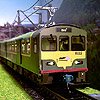
00 scale corrugated iron sheeting
murrayec replied to jhb171achill's question in Questions & Answers
Hi jhb Here is another corrugated roof I've been working on, it's scale 1:1 and has taken about 300 years to get the weathering correct! but you must agree it does look very authentic...... ....and yes Borithe ''I hear the rain'' Eoin -
Great result, well done guys Eoin
-
Excellent idea, I like it a lot.... Eoin
-
-
until
-

00 scale corrugated iron sheeting
murrayec replied to jhb171achill's question in Questions & Answers
Hi jhb Corrugated sheeting can be easily home spun- with a little practice;- Here's one I prepared earlier Tinfoil, cardboard or styrene base, pva glue and a long spring- cut the card to the size required, then spread the pva glue on it nice and thick, then lay the tinfoil on top, then roll the spring over the laminate with light pressure. The glue squeezes out where the spring wire makes contact leaving a nice corrugation look, a little practice to perfect the technique and you could sheet your whole kitchen.... then all that is needed is painting & decoration! Eoin -
Yes, some lovely stuff Pity to see it being separated, wouldn't it be nice to see the collection held in a museum or the like? Eoin
-
Holy Moley Noel What am I going to do? - I don't have a gate code! for that matter I don't even have a gate Eoin
-

Source for non-upright loco vacuum pipe hoses?
murrayec replied to Noel's question in Questions & Answers
Hi Noel 'Langley' white metal hoses, a little tweak n bend - they come in a packet with various types and enough for about 6 locs or wagons... Eoin -
Don't forget Guys, the Train & Model Fair is on tomorrow. Eoin
-
Hi John I love it, trains everywhere.... Eoin
-
Hi popeye 4 looks OK to me on the red background. Eoin Edit;- Looking again- 3 i'm now liking but less Humbrol 2 in it??
- 96 replies
-
...and again, I knew I had it somewhere in me notes! Humbrol 78 matt 'Cockpit Green', and then use a gloss finish if you wants shinny- personally I would go for matt for a sun beaten weathered look;- Eoin Hi jhb Yes, that's worth a try.... Eoin
- 96 replies
-
Hi Guys Here is a montage of colours being discussed;- Unfortunately I don't have Humbrol 3, only have Airfix close to! and only Mr Poots Dublin Bus but are correct for the bus & DART.... So Brunswick is the closest and does need a bit of adjustment, besides mixing to get the correct shade one could also try a dark yellow, and even a light blue undercoat? Eoin
- 96 replies
-
Hi johnminnitt As far as I know those paints are for the 80's/90's Dublin Bus and the DART, the dark green is not as dark as popeye requires, Humbrol 2 is getting there but I reckon not dark enough- yellow is only going to lighten it.... I'd start with Humbrol 3 'Brunswick Green' and maybe try a smidge of yellow or..... test away.... Eoin
- 96 replies
-

Does anybody in Dublin stock the Back Track magazine?
murrayec replied to jhb171achill's question in Questions & Answers
Hi jhb You could also buy it here;- http://www.pendragonpublishing.co.uk/index.htm Eoin Hi jhb As wrennie says- Diarmuid may be able to help;- https://www.facebook.com/search/top/?q=weir park books and models Eoin
.png.c363cdf5c3fb7955cd92a55eb6dbbae0.png)

